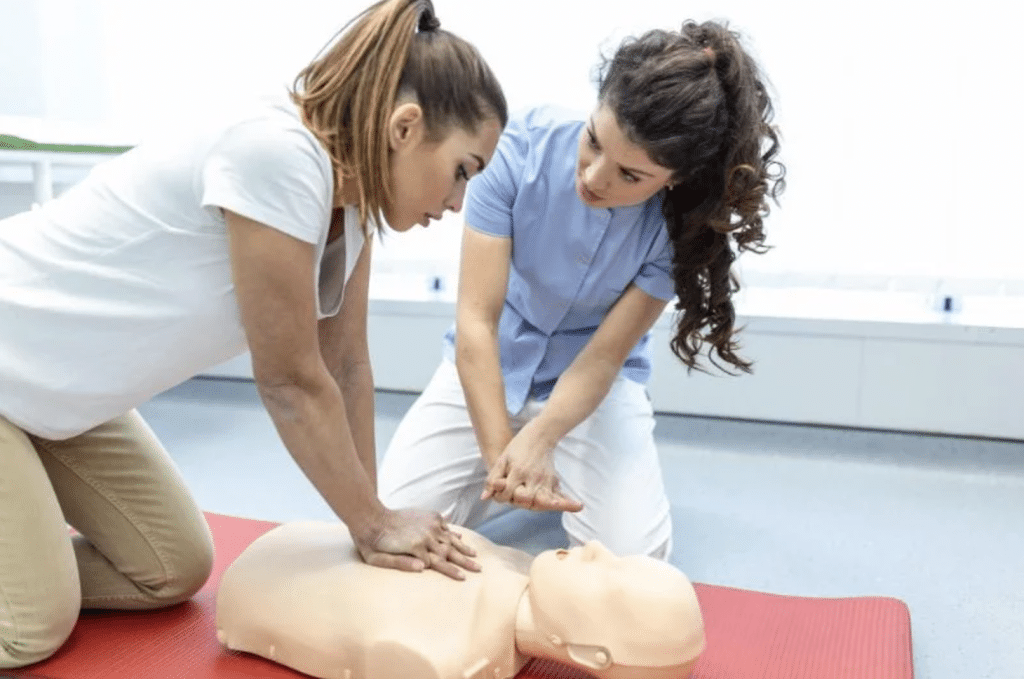When an adult is unresponsive and choking, every second counts. Knowing the correct steps to perform CPR can make the difference between life and death. In this, we’ll walk you through the techniques needed to handle such emergencies, so you’ll feel confident and prepared to act.
Understanding the Emergency
In a choking scenario, the airway is blocked, often by a food item or foreign object. When the victim becomes unresponsive, it indicates a severe obstruction as the body lacks enough oxygen. This article will cover:
- Recognizing the signs of an unresponsive choking victim.
- The detailed steps to administer CPR.
- Safety tips and precautions.
Recognizing Choking and Unresponsiveness
Before jumping into action, it’s crucial to identify the problem correctly. An unresponsive choking victim will show specific signs:
- Inability to speak or make noise.
- Lack of breathing or faint gasping sounds.
- Progressive blue or purple discoloration (cyanosis) of lips and skin.
- Collapse or unconsciousness.
Quick Fact: The brain can only survive for about 4 to 6 minutes without oxygen.
Calling for Help and Preparing for CPR
Stay Calm and Call Emergency Services
The very first step is to calm your nerves and promptly call emergency services. Providing them with essential information ensures help is on the way:
- Your exact location.
- Brief on the victim’s condition.
- Any significant actions you’ve taken, such as CPR attempts.
“When seconds count, clarity and calmness are your allies.”
Positioning the Victim
Before commencing CPR, it’s vital to ensure the victim is in the proper position:
- Lay the person flat on their back on a firm surface.
- Kneel beside them, ensuring you’re comfortable enough to perform CPR without straining.
- Clear the airway: Tilt the victim’s head back gently by lifting the chin and pushing the forehead back.
Performing CPR: Step-by-Step Guide
Step 1: Chest Compressions
Starting with compressions is key in an unresponsive adult:
- Position your hands correctly: Place one hand over the center of the chest, right between the nipples. Position your other hand on top of the first.
- Begin compressions: Use your body weight to compress the chest at least 2 inches deep, with a pace of 100-120 compressions per minute.
- Count aloud: This helps maintain a consistent rhythm and keeps focus on the task. If possible, alternate with someone else to avoid fatigue.
“Effective chest compressions are crucial for maintaining circulation.”
Step 2: Rescue Breaths
While current guidelines emphasize compressions, rescue breaths can provide supplementary support:
- Tilt the head back, ensuring the airway is open.
- Pinch the victim’s nose closed and place your mouth over theirs to create a seal.
- Administer two breaths: Each should last about a second, ensuring you see the chest rise.
Repeat the cycle of 30 compressions followed by two breaths.
When to Stop CPR
Continue CPR until:
- The person starts breathing or shows signs of consciousness.
- Professional help arrives and takes over.
- You are physically unable to continue due to exhaustion.
Safety Tips and Precautions
While performing CPR, ensuring your safety is as important as the victim’s:
- Use a CPR face shield, if available, to avoid direct contact.
- If you’re unsure about rescue breaths, focus solely on compressions.
- Check for surrounding hazards to ensure both your safety and the victim’s.
Conclusion
Being prepared can save lives. This guide provides the foundational steps to tackle an unresponsive adult choking situation with confidence. Regularly updating your CPR skills through courses and refresher training can empower you to act promptly when moments matter the most.

